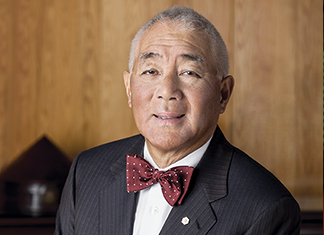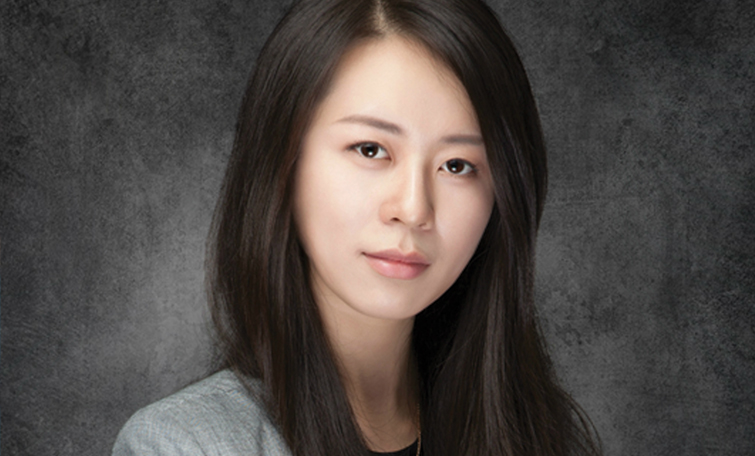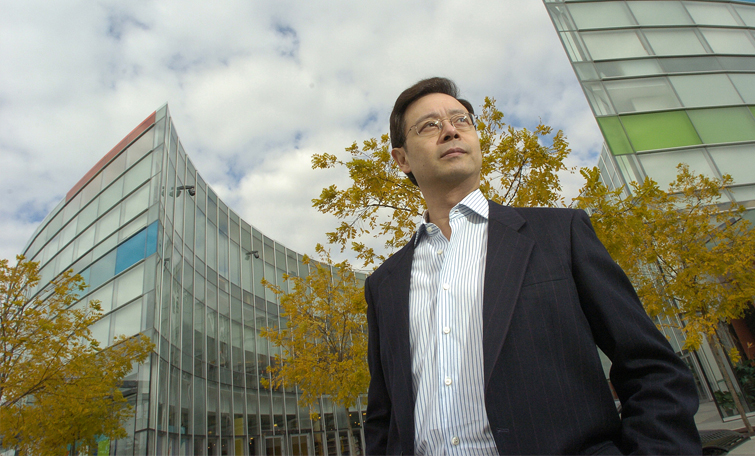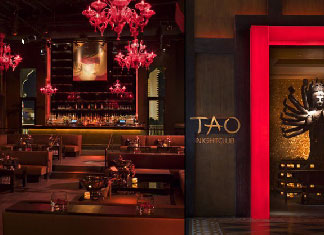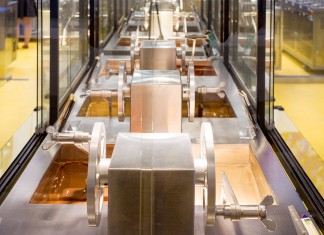Asia’s Thirst for Fine Wine Drives Demand
- Caifu Magazine | by Caifu Global
- EN
 By: Blake Friesen
By: Blake Friesen
And now that the Internet links buyers and sellers across the world, it is also becoming increasingly competitive. Social media has increased the power of wine critics, who write at length about the significance and history of various wines, and often highlight a certain vintage, which leads to an increase in demand. In October, 2014, Sotheby’s handled the sale of 114 bottles of Romanée-Conti, a pinot noir from the Burgundy region in France, for the fine price of US$1,609,776. The bottles’ vintages ranged from 1992 to 2010.
That sale was the world’s most expensive wine lot. The buyer, although undisclosed, was Asian, and the sale happened at an auction house in Hong Kong. Crunching the numbers, the sale averages out to US$14,141 per bottle and US$1,700 per glass. While the sale of the wine lot is impressive, the most expensive single standard bottle is a 1947 French Cheval Blanc Bordeaux. A private collector, also unnamed, acquired the bottle a Christie’s auction in November, 2010, for US$304,375.
Fine wine collection is now big business and Asia is a major source for demand. Global wine auction sales from major commercial auction houses peaked in 2010 with combined sales of US$408-million, according to Wine Spectator. Most of the sales occurred, and continue to occur, in Hong Kong. The city removed tax tariffs on imported wine in March, 2008. Since then, Hong Kong has become a wine hub for mainland Chinese buyers, most of whom are relatively new to collecting wine when compared with collectors in Europe and North America. “From 1994 through mid-2008, U.S. wine collectors built significant cellars because they were not price sensitive in their pursuit of fine wine,” recalled Jamie Ritchie, CEO of Sotheby’s Wine Americas & Asia, in 2010 after noticing a shift to Asia in the purchasing power. “Now, Asian wine buyers have taken over that role and are likely to be driving demand for fine wine over the next 15 years.”
Buyers collect fine wine for different reasons. Some want the prestige of simply owning an expensive bottle, others want to drink a rare bottle and savour the taste, and of course there are also collectors who buy wine as an investment. For buyers in search of investment grade wine, Trellis Wine Investments has a checklist of five characteristics to consider: pedigree, longevity, price appreciation, liquidity and high critical acclaim. The wine producer must have pedigree, which means a famous brand that is well known for high-quality wine. For long-term investments, the wine must be able to age at least 25 years, with maturity occurring no earlier than the 10th year. The wine must have a consistent and documented history of substantial price appreciation and it must be produced in quantity that is liquid, but rare enough to be desired in the secondary market. Finally, the wine must receive excellent reviews from acclaimed wine critics in order for it to be investment worthy. After purchasing the wine, a collector must store the bottle in an appropriate environment, otherwise the wine will age badly and lose its value.
According to Wine Spectator, the ideal environment for storing wine is about 55 degrees Fahrenheit, humidity levels of between 50 percent and 80 percent, and no exposure to sunlight. High temperatures and sunlight may cause the wine to age prematurely, whereas low temperatures and low humidity may dry out the cork, allowing air into the bottle and spoiling the wine. The bottle should also be stored sideways so that the cork will always be moistened. If the humidity is too high, mold may grow in the wine or on the label.
The science behind wine storage ensures that the chemical reactions in the wine will take place properly. Most wines on the market are not suitable for aging; they are meant to be consumed shortly after purchase. Only about 1 percent of global wines produced annually are suitable for long-term storage, according to Trellis Wine Investment. Generally, wines that need more time to mature in the bottle are those that are high in tannin and acid. Tannin is a chemical compound found in the skin and seeds of grapes that can change over time, improving a wine’s flavour, colour and aroma.
Cabernet sauvignon grapes from the Bordeaux region, for example, have thick skins and make excellent wine that can be aged for 10 years or more. And even though pinot noir grapes from Burgundy are thin-skinned (and therefore low in tannin), the grape itself is high in acidity so it is also suitable for aging. The sugar, alcohol, tannin and acid content in the wine will chemically change in the bottle, making the original bottled wine more flavourful and aromatic. However, wines do have a prime time for consumption, and once the prime is passed the wine will taste flat and bland. The recommended aging period for different wines varies and consulting an expert is best to protect your investment and make sure it will not age past its prime.
Wine investment is considered a portfolio diversifier and a hedge against currency, inflation and market volatility. The Liv-ex Fine Wine 100 Index represents the price movement of 100 of the most sought-after fine wines for which there is a strong secondary market. The index is calculated monthly. Since establishing the index in 2001, investors have been able to compare its performance with broader indexes such as the S&P 500. Wine has proven to be relatively unaffected by volatility and bear markets. When the market crashed in the fall of 2008, for example, the prices of fine wines were largely unaffected.
The risks of owning fine wine include spoilage, damage, theft and forgery.The provenance of a fine wine is particularly important to ensure it has been stored properly. Although most collectors have their wine in secure locations, there is still a risk of damage and theft. The story of Mark Christian Anderson best illustrates a worst-case scenario for such risks. In 1999, Mr. Anderson opened a wine storage facility in Northern California. Shortly afterward, he began illegally selling his clients’ fine wine collections as his own. As suspicion of his criminal activity grew, he closed down his wine facility and started renting space in a nearby facility to continue doing business. He then decided the best way to save himself was to destroy any probable evidence by setting the wine storage facility where he was renting space on fire. In October, 2005, he went ahead with his plan, destroying 4.5 million bottles of fine wine worth US$277-million.
There is also a real risk of buying fake wine. The most infamous name in fake wine is Rudy Kurniawan, whose forgeries were sold privately and auctioned publicly during the 2000s. Mr. Kurniawan auctioned a wine lot -- completely fake -- from his own collection for US$24.7 million in 2006. He was able to fool many collectors and experts, but he was finally caught and arrested in the spring of 2012 after attempting to sell wine from the region of Burgundy that was not in production until years after the date on the bottle. The FBI raided his home and found a counterfeiting factory filled with vintage bottles, fake labels and recipes to reproduce the taste of fine wines via blends of different wines. Mr. Kurniawan’s fakes still pervade collections throughout the world today.
The best way to avoid a fake is to buy straight from the vineyard. Or if you are a high net-worth investor, the best way is to simply buy a vineyard. Chinese investors have purchased more than 100 Bordeaux wine estates since 2010, and China is now the world’s biggest market for red wine. Owning and operating a vineyard requires time and money, and having a vineyard on your list of assets is seen by the affluent Chinese as a status symbol.
2014 Fine Wine Auction Sales Summary and Future Trends
In its annual summary of fine wine auction sales, Wine Spectator calculated sales from commercial auction houses at US$352-million, up from US$337-million in 2013. The sales in 2014 are markedly lower than 2010 (US$408-million), partly because Xi Jinping’s anti-corruption crackdown has limited Chinese government officials from buying luxury items and exchanging extravagant gifts. Jamie Ritchie, CEO of Sotheby’s Wine, said to Wine Spectator earlier this year, “The austerity measures in Mainland China have impacted the market, but we are still seeing consistent demand from Asia—more consistency and less volatility so far.”
Burgundy is now the most sought-after region for fine wine. It took the lead from Bordeaux in market share for the first time in 2014. As well, California wines continue to gain popularity. Last year, for example, 26 lots of Screaming Eagle Cabernet Sauvignon with vintages dating back to 1992 were sold for US$384,720.




